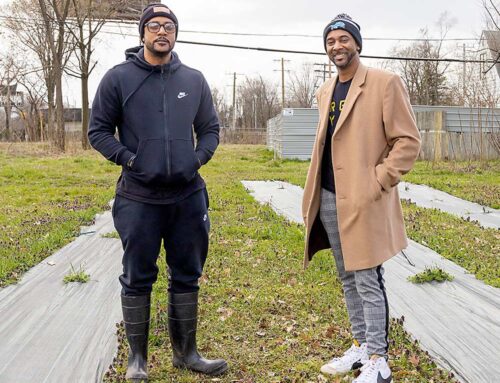The Washington state wine industry has spoken — and mechanization and precision viticulture is now a top priority for research supported by the state’s Wine Commission. Several research projects are now underway to help wine grape growers deal with increased labor costs and a shortage of skilled workers. This is a shift from a historical focus on pest management and cultural practices, driven solely by industry input.

The Washington State Grape and Wine Research Program was established in the early 1980s to bring funding stability to viticulture and enology research conducted by Washington State University scientists. Originally, the program was solely funded by state taxes collected on all wine sold. Now the program is funded by the Wine Commission, state wine liter tax, the Auction of Washington Wines and Washington State University.
Since the program’s inception, the majority of viticulture research projects have tackled pest and disease problems, resulting in game-changing outcomes: strategies for controlling cutworms, managing grapevine leafroll virus and its vectors of mealybug and scale, managing powdery mildew, and developing nutrient guidelines and deficit irrigation strategies to improve wine quality. But grape growers now struggle with a new challenge, as rising labor costs and a diminishing workforce threaten the economic viability of all Washington wine producers — large and small.
Labor is a major worry for wine grape growers, particularly small, premium wine producers who must compete for the same labor pool as large, diversified farmers. Labor and mechanization were cited as one of the top long-term research priorities during the 2017 annual research survey conducted by the Washington State Wine Commission.
Growers see mechanization of vineyard tasks and precision viticulture as tools to combat the labor problem. However, before they buy new equipment and adopt new technology, they need research data to help them make sound business decisions. This research should help growers to understand the impact of preserving and enhancing fruit and wine quality and to develop economic and financial plans.
Mechanization projects
Four research projects dealing with mechanization and precision viticulture are underway. Three are funded through the statewide research program and the fourth is a project jointly funded — for the first time — by the Washington and Oregon wine industries (Washington State Wine Commission and Oregon’s Erath Winery Foundation). Here are brief updates on the four research projects:
Impact of mechanized precision pruning and thinning on wine and grape composition,
by James Harbertson and Markus Keller of Washington State University.
The last of four years of data was collected during the 2018 harvest, but sensory data is still to be analyzed. Preliminary findings indicate that hand-pruned vines were more variable in regard to vine performance and wine composition compared to the mechanically pruned and mechanically thinned treatments, and that mechanical pruning had little impact on a wine’s sensory profile compared to hand pruning, as long as similar harvest criteria were met.
A final report will be submitted at the project’s completion date of June 30.
Developing a smartphone app to estimate crop load,
by WSU’s Manoj Karkee.
Seed money provided in 2018 launched work on a smartphone app to estimate crop load and eliminate the tedious, labor-intensive, costly and crop-destructive task. Initial work shows the concept has potential.
Developing a precision mechanical shoot thinner,
by Qin Zhang of WSU.
Mechanical shoot thinning has the potential to save growers more than $250 per acre in labor costs, but existing machines are not precise enough. The first year of a two-year project is underway to develop a technique for precise, automated positioning and orientation of thinning heads to improve usability and commercial adoption of mechanical shoot thinners.
Developing economic and financial benchmarks for vineyard mechanization,
by Clark Seavert, Oregon State University.
This one-year project, to be completed June 30, will:
- Identify the vineyard tasks that would generate the highest return on investment by integrating mechanization;
- Determine the financial requirements to purchase machines by farm size and the minimum acreage required to make the investment feasible; and
- Compare the economics of retrofitting existing or establishing new vineyards designed for mechanization.
Seavert participated in the Washington Tree Fruit Research Commission’s Technology Roadmap working group and helped develop AgBiz Logic, a free, online suite of economic, financial and environmental decision tools for growers. He will use the AgBiz Logic database to help grape growers analyze the financial impacts of mechanization.
The vineyard mechanization economic study was directly funded through a research reserve account created by the Washington State Wine Commission. The account was established two years ago to provide flexibility for funds for emerging or emergency issues that don’t coincide with the statewide program’s timeline.
The economic project was reviewed by the Wine Research Advisory Committee, the industry’s scientific review arm, and approved by the Wine Commission board of directors in the same manner as projects funded through the statewide research program.
The mechanization and precision viticulture research projects are proof that the Wine Commission’s research program is driven and guided by the industry and is responsive and relevant to the needs of both large and small wine producers. •
—by Melissa Hansen






Leave A Comment